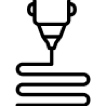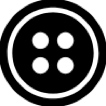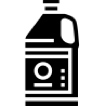In order to define a color, it is necessary to determine it according to a reference frame as the Pantone color chart for instance, and measure the result.
You often need specific shades that are not part of TCN’s standard shades of coloration ranges: CRX, GTC, GTD, TACC, PCL4…

This device allows you to check that the color is indeed the one you want to dye your plastic parts with, as for example: additive manufacturing parts, CR-39® organic lenses, polycarbonate lenses, eyeglass frames in cellulose acetate…
3.1 The reference
The Pantone color chart is a world reference for color. It is used to specify colors in different industries, including plastics. It attributes a number to each color shade, regardless of the polymer type that you have to dye: TPU, PA11, PA12, PEEK…
Using a Pantone number to communicate allows you to visualize the requested shade. The chosen number guarantees you to indicate clearly which color you are talking about to another person and avoid confusion.
There are other color coding systems, for instance, RGB for red, green, blue and HSL for hue, saturation, lightness. These systems are useful to define a color and indicate directly the proportions that characterize its composition.
Indeed, to create the color that you want with the RGB code, you can decide on the quantities of primary colors to mix and attribute a number between 0 and 255. The more the number is high, the more the intensity of the primary color will be strong. You can also decide on the strength of your color thanks to the HSL code.
These codes will be useful in case you need to obtain a specific color because you will be able to choose the codes that suit you best and then color your 3D printing parts with SLA, MJF, SLS or other technologies, your organic lenses, your eyeglass frames or any other plastic part.

3.2 The measure
The finest visual acknowledgment is able to distinguish up to 200 shades for the same color and about 300,000 different colors.
The eye perceives blue, green and red through its photoreceptors.
The human eye has two types of photoreceptors: rod cells, that enable the vision of black, grey and white tones, and cone cells that enable to perceive colors.
As colors can be perceived differently depending on the individual, the International Commission on Illumination (CIE) has defined standards to define a color.
These criteria prevent any misunderstanding that can occur when you have to define the color to dye your plastic parts.
In 1976, the CIE develops the Lab colorimetric model (also known as CIELab), in which one color is identified by 3 values:
- L, luminance, expressed as a percentage (from 0 for black at 100 for white),
- a and b, 2 ranges of color ranging from green to red and from blue to yellow with values ranging from -120 to +120.
The Lab mode thus covers the entire spectrum visible to the human eye and represents it uniformly. It therefore makes it possible to describe the set of colors visible independently of any graphic technology.
The color distance, that is symbolized by “∆E” is defined as a measure of difference between 2 colors: ∆E = (∆L2 +∆a x 2+∆b x 2)1/2
This is a mode widely used in the coloration industry. Using it ensures that a color created according to these models will be seen in the same way by everybody.
























